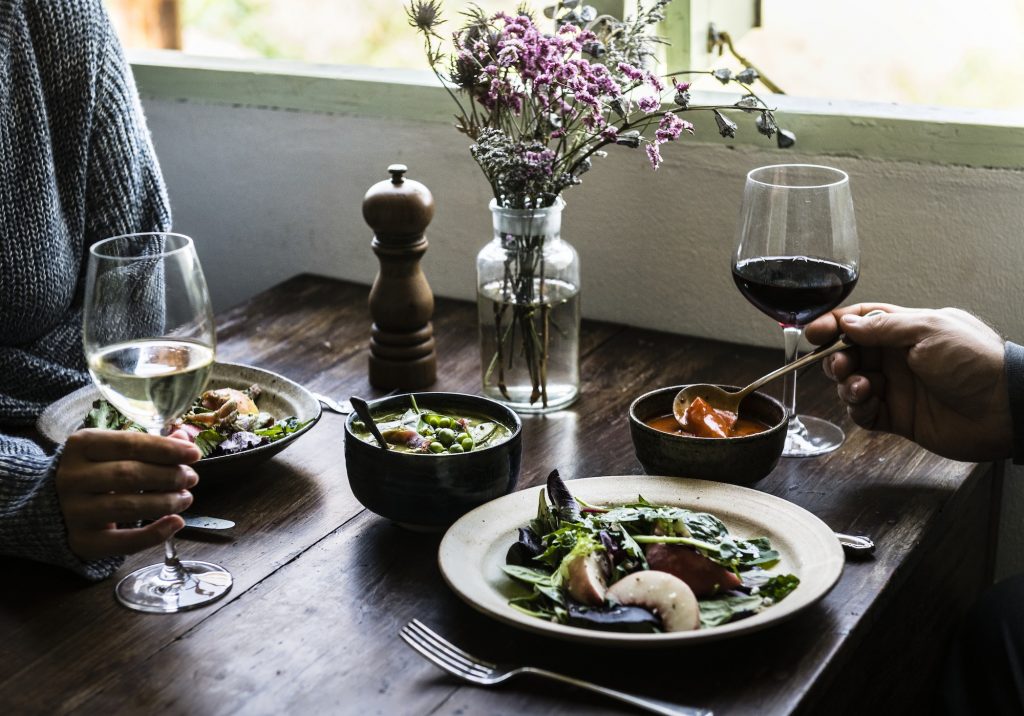Introduction
Choosing the perfect wine to complement a meal can be a daunting task. However, pairing wine with food is not as complicated as it might seem. With a few expert tips, you can master this art and enhance your dining experience. So, let’s dive into the world of wine and food pairing!

The Basics of Wine and Food Pairing
Balance Between Wine and Food
The key to a successful pairing is balancing the wine and the food. You want the wine to neither overpowers nor be overshadowed by the dish. To achieve this balance, consider the weight, intensity, and texture of the wine and the food. For instance, a full-bodied wine pairs well with a rich, heavy dish, while a light-bodied wine complements a delicate dish.
Complementing Flavours
Another pairing aspect is finding complementary flavours between the wine and the dish. A fruity wine can enhance the flavours of a dish with fruity elements, while a wine with herbal notes can bring out the herbs in a dish. When the flavours complement each other, the combination elevates the dining experience.
Contrasting Flavours
Sometimes, contrasting flavours can create an exciting and enjoyable pairing. A sweet wine can be an excellent contrast to a salty dish, while a high-acid wine can cut through the richness of a fatty dish. Experimenting with contrasting flavours can lead to unexpected and delightful pairings.
Pairing Wine with Different Types of Food
Red Meat
Red meats like beef and lamb are best served with red wines, as their bold flavours and higher tannins can stand up to the meat’s richness. Cabernet Sauvignon, Merlot, and Malbec are popular choices for red meat dishes.
White Meat
White meats like chicken and turkey are more versatile in their wine pairings. Light reds like Pinot Noir and whites like Chardonnay and Sauvignon Blanc can complement white meat dishes.
Fish and Seafood
White wines are the go-to choice for most fish and seafood dishes, as their acidity and citrus notes complement the delicate flavours. Sauvignon Blanc, Pinot Grigio, and Chardonnay are popular choices. However, fish dishes with bold flavours, like salmon or tuna, can also pair well with light red wines such as Pinot Noir.
Vegetarian Dishes
Vegetarian dishes offer various flavours and textures, allowing for various wine pairings. Light, crisp white wines like Sauvignon Blanc or Pinot Grigio can enhance the flavours of a fresh salad, while a full-bodied red like Cabernet Sauvignon can stand up to the richness of a hearty, vegetable-based stew.
Spicy Food
Pairing wine with spicy food can be challenging, as the heat can overpower the wine. However, a slightly sweet, low-alcohol wine like Riesling or Gewürztraminer can help to cool the heat and complement the spices in the dish.
Pairing Wine with Cheese
Wine and cheese are a classic combination, and finding the perfect pairing can elevate both flavours. A good rule of thumb is to pair wines and cheeses from the same region, as they often share complementary characteristics. For example, a French Brie pairs well with a French Chardonnay, while an Italian Parmesan complements an Italian Chianti.
Pairing Wine with Dessert
When pairing wine with dessert, choosing a wine that’s sweeter than the dessert itself is essential to prevent the wine from tasting bitter or sour. Dessert wines like Sauternes, Moscato, and Port can be excellent choices for a range of sweet treats, from fruity tarts to rich chocolate desserts.
Wine Pairing Tips for Special Occasions
Dinner Parties
When hosting a dinner party, offering a selection of wines to cater to different tastes is a good idea. Start with a light, refreshing white or sparkling wine as an aperitif, and then move on to reds and whites that complement the main courses. Finish the evening with a dessert or fortified wine to accompany the dessert course.
Weddings
Choosing the perfect wine for a wedding can be daunting, as you want to cater to a large and diverse audience. Opt for crowd-pleasing, versatile wines that pair well with various dishes, like a crisp Sauvignon Blanc or a smooth Merlot.
Wine Tasting Events
At wine-tasting events, the focus is on exploring different wines and their unique characteristics. Offer a range of wines, from light whites to full-bodied reds, and ensure guests can access palate cleansers like crackers or bread between tastings.
Conclusion
Mastering the art of pairing wine with food can enhance your dining experience and impress your guests. By considering the balance, complementing and contrasting flavours, and understanding the basics of pairing different types of food with wine, you’ll be well on your way to becoming a wine and food pairing expert.
FAQs
- Can I pair rosé wines with food? Absolutely! Rosé wines are versatile and can pair well with various dishes, from light salads and seafood to grilled meats and spicy dishes.
- Is it okay to break the traditional pairing rules? Definitely! The most important thing is to find pairings that you enjoy. Don’t be afraid to experiment and discover new combinations that work for you.
- What should I consider when pairing wine with vegan dishes? As with any other pairing, focus on the dish’s flavours, textures, and weight. Many vegan dishes pair well with white, red, and rosé wines.
- How important is it to serve wine at the correct temperature? Serving wine at the right temperature can greatly impact the taste and enjoyment of the wine. White wines should generally be served chilled, between 7-13°C, while red wines are best served slightly cooler than room temperature, around 15-18°C.
- How can I expand my knowledge of wine and food pairings? Attending wine tastings, reading books and articles, and talking to sommeliers or wine experts can help you develop your wine and food pairing skills. The more you experiment and learn, the more confident you’ll become in your pairings.
